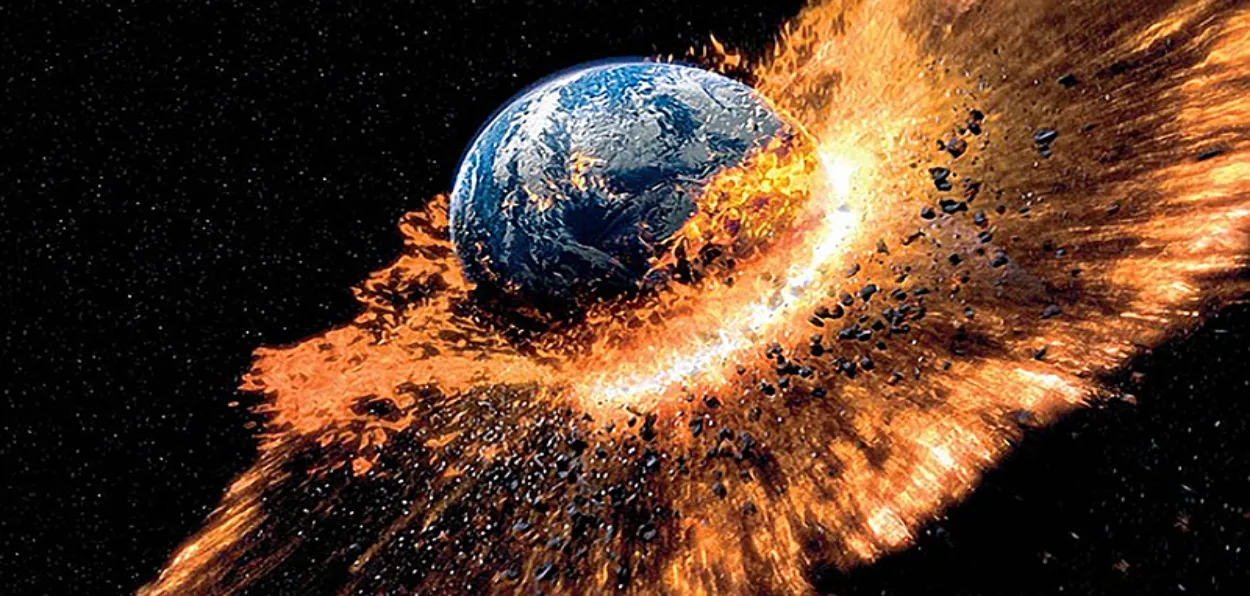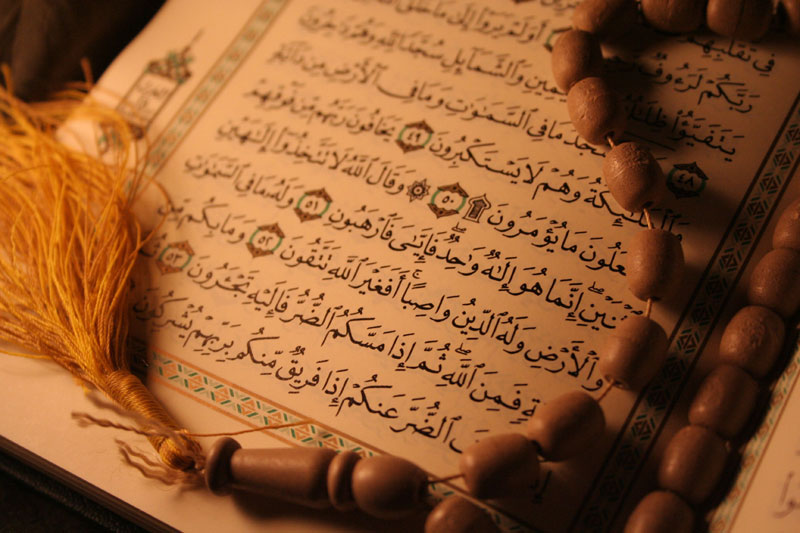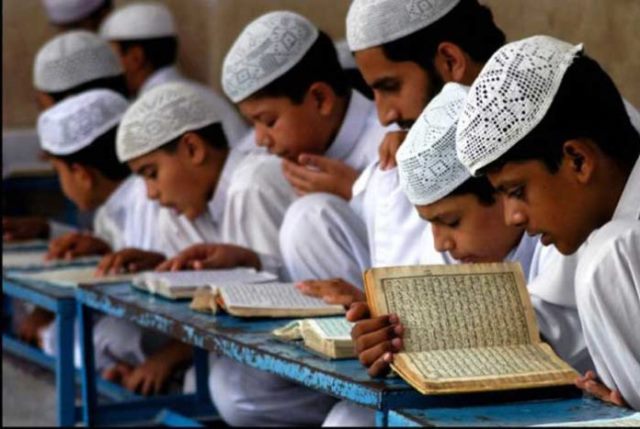
Hafeezur Rahman
Being a student of the Holy Quran, I find many Quranic verses that directly refer to science, and scientific research, and stress the use of logic to search in the earth, sky, air, and water. Allah has mentioned in the Quran that He sent the Prophet to read Quranic verses before us to give the knowledge of Hikmah which means science.
During the difficult days of the COVID, I hosted a webinar on the intersection of Islam and Science. It was a challenge since I had never explored the topic. Dr. Qamar Rahman Sahiba from Lucknow and Dr. Shariq Ali Khan from the UK delivered impressive presentations and ignited my interest into the scientific verses of the Quran. This experience prompted me to think about why some Muslims perceive science as conflicting with their faith.
I went through some YouTube discourses of Dr Shariq Ali Khan on the Quran and science, especially his seven-part compilation of Islam and science for starters. Each part deals with different topics such as Earth, Water, Universe, Big Bang, 5 pillars, etc.
Maulana Wahiduddin Khan, a prominent Islamic scholar dedicated much of his work to exploring the scientific aspects of the Quran and fostering an understanding of Indian culture and society. His efforts were aimed to highlighting the communal points of religions and promoting peace and harmony. Others like Dr. Shariq Ali Khan exemplify this commitment to bridging faith and science. It is essential to integrate their exemplary work into madrasas and community schools, especially in this era of modernity, scientific advancement, and economic progress. By connecting holy texts and spirituality with scientific knowledge, we can equip the next generation with the tools they need for a brighter future.
The benefits of learning the Quran along with science-based learning are numerous for Muslims as well as for wider society. Just to mention a few: Stronger faith, de-radicalisation, progressive youth, technical innovation, productive and industrious community, and, last but not least, reform of Muslims back to the golden age when most scholars were polymaths. Therefore, the introduction of this Islam and science-based curriculum is in the best interest of both Muslims and non-Muslims for a stronger and more united India with increasing harmony between different religious groups.
The Quran was revealed to the Prophet Mohammed more than 1400 years ago at a time when telescopes, spaceships and satellites did not exist. It covers many aspects of natural phenomena in modern science. In the Quran, Allah has told us exactly how the Universe is built.
In the Quran, Allah also explains that He makes the Universe grow and how. He gave elements like iron which were made inside giant stars which are extremely far away. Scientists call these Supernovae which explode when they are incredibly old. Then comets and meteors burst out of it. Scientists discovered all these things in the 20th century and the Hubble-Telescope has helped scientists in proving much of this, and this telescope is only around 30 years old.
In the Quran, Allah asks, “Do not the unbelievers see that the Heavens and the Earth were joined together before I tore them apart…?”
Surah Al-Anbiyaa, 21 Ayah 30. This refers to the Big Bang. Shortly after the Big Bang, there was smoke, which was built up of hydrogen and helium. The bodies in the universe came together out of the same material as this smoke. Therefore, the planets are also made from this smoke. We live on such a planet called the Earth.
 The Holy Quran
The Holy Quran
In the Quran, Allah says: “I made the Moon a light in their midst and the Sun a Lamp” Surah Noah, 71 Ayah 16.
The scientists found out much later that the Moon has no light of its own and reflects the light of the Sun. This difference was not known at the time when the Quran came.
The Sun and the Moon are very different as the sun has a lot of energy and is very big. Its weight keeps it from falling apart with intense hydrogen and helium on the Sun and the Sun sends out energy in the form of light and heat across the solar system comparable to a hot lamp, which means, it is a source of light. The Moon is made of cold and solid rock and has very little energy and reflects the Sun’s light. In Surah Ha-Mim, 41 Ayah 10, Allah orders Heaven and Earth to come together from smoke 10 billion years ago: 5 billion years ago:
The Moon has different stages because the shadow of the Earth covers it from different angles going from full, over half to less than a quarter of its size and then even smaller. Finally, appears full and later returns to a tiny sickle shape. One period like this is called a lunar month. These stages influence life on Earth and the tide of the oceans: Allah has made the Sun and Moon so we can measure time through their movement (Surah Yunus, 10 Ayah 4).
Allah also described in the Quran 1400 years ago that the Sun is moving around the centre of the galaxy just like the Moon around the Earth. Until 200 years ago people thought that the Sun stood still. “…the Sun and the Moon: all swim along, each in its rounded course.”
Allah mentions two types of planet-like bodies in the Quran, “So verily I call to witness the bodies (Khunnas) that rise and set”. (Surah At-Takwir, Surah 81 Ayah 15/16).
“When Joseph said unto his father: O my father! Lo! I saw in a dream eleven planets (Kawakib) and the sun and the moon, I saw them prostrating themselves to me.” (Surah Yusuf, Surah 12 Ayah 4).
Every star, like our sun, has planets that turn around it. This is called a solar system. It’s ture of our solar system with planets a comet and the sun, 11 planets, 2 just discovered after 2000! Our star, the Sun, and planets: are Mercury, Venus, Earth, Asteroids (formerly Ceres), Mars, Saturn, Jupiter, Uranus, Neptune, Pluto, and now discovered Eiris.
There are many different types of universal bodies in the Quran such as khunnas, kawakib, tariq, shams, qamar, and najm, which are the words for heavenly bodies in the Quran. The Khunnas appear and disappear. They are the comets. The kawakib are planets, like our Earth. Najm is a star. Tarig is a very bright night or morning star, in fact, a planet, like Venus. Shams is the Sun. Qamar the Moon.
This is another fact that was not known at the time of the Prophet Mohammed (peace be upon him) when the Quran was revealed to him.
Both the Sun and Moon are moving and scientists only found out about 100 years ago that the Sun and the Moon together with the whole of our solar system will crash into a very distant Galaxy called the Dog-system.
The eleven planets mentioned in the other verse of the Quran are the nine planets of our solar system and two planets that have recently been discovered. The furthest two common planets have a strange movement. This tells us that there must be more planets disturbing them. They are even thought to be bigger than the commonly known Pluto.
The seven layers of the atmosphere are different. The seven atmospheric layers with height and temperature are the troposphere, stratosphere (ozonosphere), mesosphere, thermosphere, exosphere, Ionosphere, and magnetosphere.
"He completed them as 7 heavens (layers) in 2 days and He assigned to each layer its duty and command." (Surah Ha-Mim 41, Ayah 12).
Modern science has revealed that Earth's atmosphere formed during the latter stages of its evolution, comprising seven distinct layers, each crucial for safeguarding life on our planet. The discovery of the ozone hole in the upper stratosphere highlighted the detrimental impact of harmful chemicals, leading to an increase in skin cancer cases. However, concerted efforts to address environmental concerns, including banning harmful substances like those found in old hairsprays and refrigerators, have resulted in the closure of the ozone hole. This success serves as a testament to the effectiveness of collective action in combating climate change. As stewards of the Earth, humanity bears a responsibility bestowed upon us by Allah to safeguard and preserve the environment. In the Surah Ar-Rahman Allah describes the beauty of nature and then says:
“And the heaven He raised and imposed the balance, So that you do not disturb the balance.And establish weight with justice and do not transgress the balance.” (Surah Ar-Rahman55, Ayah 7-8)
Allah swears an oath on the atmosphere "By the atmosphere which reflects (sends back)..." (Surah At-Tariq, 86 Ayah 11)
All the layers of the atmosphere reflect something out into the universe or back down to Earth. They protect the Earth from loss of air so we can breathe and like the ozonosphere (ozone layer) they protect us from danger. The ozone layer saves us from too much UV light from the Sun.
Allah also says in the Quran:
"Allah created seven atmospheres and of the Earth a similar number." (Surah At-Talaq 65, Ayah 12)
With this Allah means the seven layers inside the Earth, which were unknown until scientists measured earthquakes. For this they used seismographs which were only invented by the middle of the 20th century, The seven inner layers of the Earth. Allah swears by the Earth in the Quran: "By the Earth which is cracked" (12 Surah At-Tariq, 86 Ayah)
 Students in a Madrasa
Students in a Madrasa
The crust of the Earth is torn apart into many pieces which are called the continental plateaus. They swim or drift on the liquid mantle which is like molten rock. This is why the continents shift and the surface of the Earth changes. Mountains form and grow when plateaus push against each other...
This is a continental fault in California. Here two continental plateaus meet each other. “And He placed on the earth firm mountains, standing high, showered His blessings upon it, and ordained ˹all˺ its means of sustenance…”( 10 Ayah ,41 Ha-Mim Surah)
Mountains are rich in minerals because they bring out rare materials from the Earth’s interior.
Scientists have only found this now plateaus are pushed together or over each other. They expose rare minerals. The lower plateau sinks deep into the Earth due to gravity. Mountains are like pegs or nails as said in the Quran. The mountains move with the plateaus and fold to form caves.
In the Quran Allah said about Himself 1400 years ago: "It is He Who has let free the two bodies of flowing water: one palatable and sweet and the other salty and bitter; yet has He made a barrier between them a partition that is forbidden to be passed."(Surah Al-Furqan, 25 Ayah 53)
From recent scientific discoveries, we know today: Sweet water in rivers and seas does not intermix easily with water in the oceans. Brackish (mixed) water is part of the river estuary and could be classified as a boundary between sweet and salt water.
The Quran mentions fire under the ocean! That is a discovery of the 1970s when volcanoes poured out lava into the sea. The smoke of this fire comes from the Earth's mantle and is full of minerals and nourishes a whole biosystem under the ocean which needs no sunlight (in book 5).
Allah swears another oath in the Quran "By the Earth which is cracked" (Surah At-Tariq, 86 Ayah 12)
Black smokers are mainly located along the cracks in the continental plateaus where they help the Earth's interior to "let off steam" so it does not explode. They also serve the purpose of providing important minerals to the water and that is why Allah points at their importance in two oaths, by the ocean filled with fire and by the Earth which is cracked.
Allah knows all of creation, even the bottom of the oceans and the cracks in between the continents since he created it all and one can view the ocean with cracks between the continental plates of Europe, Asia, Africa, North America, South America, Australia and Antarctica along with the basins, plains, trenches and ridges.
Allah promises in the Quran: "Soon will We show them Our Signs in the (distant) regions and in their own souls until it becomes manifest to them that this (the Quran) is the Truth. Is it not enough that thy Lord doth witness all things?" (Surah Ha-Mim, 41 Ayah 53)
A Hadith uncovers the ancient development of life on Earth, revealing its existence before the advent of light. Until the 1970s, scientists believed all life relied on sunlight. However, discoveries of chemo bacteria, or extremophiles, thriving near hot black smokers amidst ocean depths shattered this notion. These organisms, untouched by sunlight, represent the earliest forms of life, emerging before volcanic ash hindered sunlight penetration to the Earth's surface. Subsequently, plants emerged, followed by animals, aligning with the Hadith's teachings. The labour-intensive components mentioned, such as mitochondria and chloroplasts, evolved from these chemo bacteria, facilitating cellular respiration and photosynthesis. The Hadith's reference to "life/tree" symbolizes the tree of life or original DNA, while a "weekday" in this context spans approximately 700 million years.
Allah elucidates that only He possesses the power to continually create beings anew. Following our demise, He will resurrect all, including animals and humans. This act of creation is exclusive to Allah, as emphasized by the inability of genetics to replicate His divine creation. Therefore, while utilizing the genetic code and genes bestowed by Allah, humanity does not assume the role of creators but rather harnesses the tools provided. While some scientists may misuse genetic knowledge, others employ it for noble purposes like healing the sick. Thus, whether manipulating atoms or subatomic particles, humans are merely utilizing Allah's gifts, not engaging in the act of creation.
ALSO READ: Maulana Maududi, et al misinterpreted Islam to give rise to radicalism, intolerance
We must urge Muslims and students of madrasas to prioritize scientific exploration of the Quran and Hadith, drawing inspiration from the remarkable contributions of Muslim scientists during Islam's golden age.
Dr. Hafeez Ur Rahman is an Author, Islamic Scholar, and Convenor of the Khusro Foundation, New Delhi
